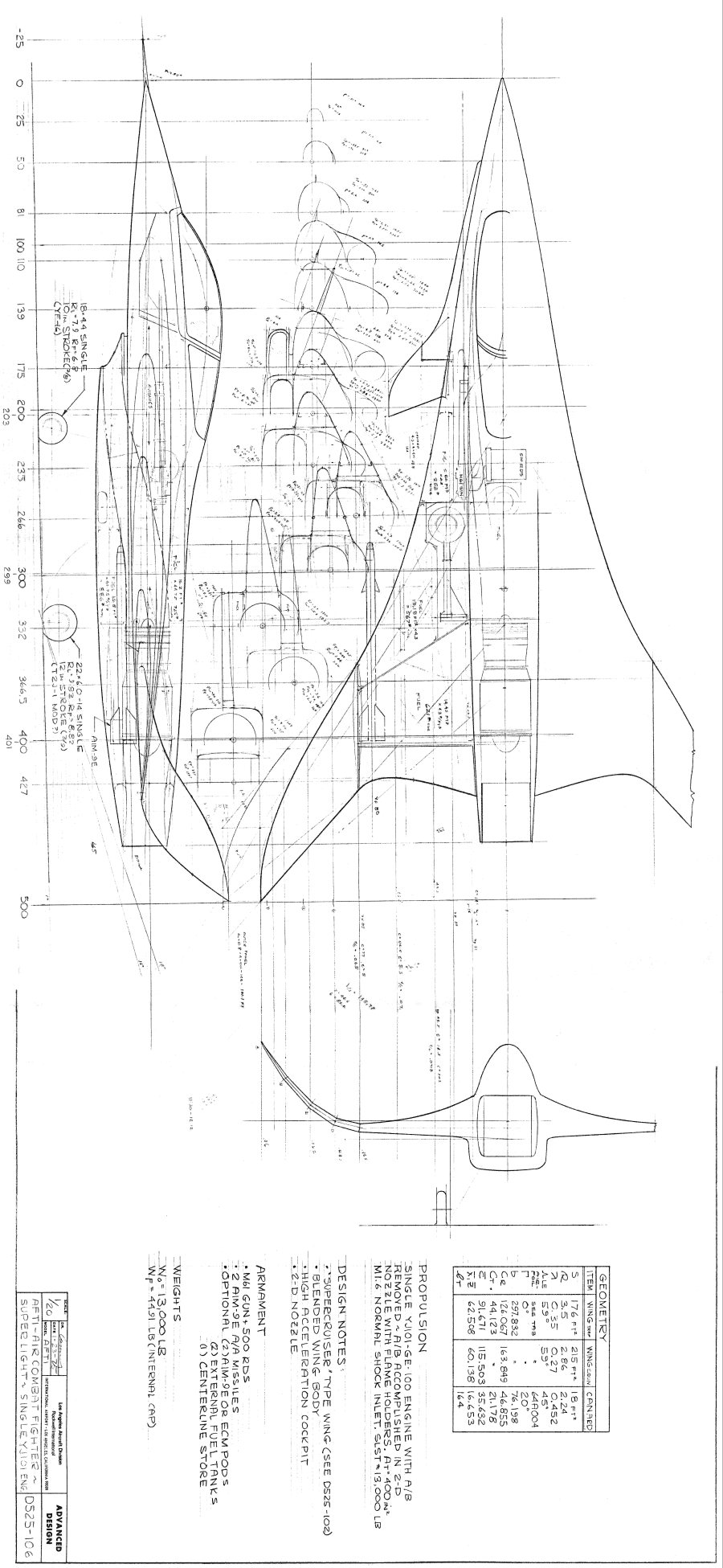Apr 102010
A design from 1975 for a small, lightweight and very maneuverable fighter. I’ve not more info than what’s on the drawing. It had a single jet with a 2-D vectorable nozzle for pitch control, along with organic curves and canards. Manufacturing it would have been something of a challenge at the time, though modern composites likely would make it relatively straightforward.
6 Responses to “Rockwell D525-106”
Sorry, the comment form is closed at this time.

I note that the nose gear is noted to be “YF-16” while the main gear note is “T2J-1 mod?”.
Didn’t something looking very much like this appear in the HiMAT program?
HiMAT may have gotten some input from this design: http://www.boeing.com/history/bna/himat.htm
…but the lines weren’t anywhere near as smooth.
What this looks like to me is something designed with radar stealth in mind, as there really isn’t any need to make it that smooth and curved if you weren’t trying to reduce the radar signature.
The intake duct is curved enough that it might shield the front face of the compressor from radar coming in the ventral intake, especially if its interior was covered with RAM.
Are the outer wings supposed to move up-and-down somehow?
Sure can’t argue with its looks; she’s a real beauty.
I was trying to remember where I’d seen a wing design like that before, then I remembered Space Ghost’s “Phantom Cruiser”:
http://www.freewebs.com/scifiprimepaper/Space-Ghost-P.C.4.jpg
It *looks* like a design for the mid-1970’s Airborne Aircraft Carrier concept Boeing looked at for the USAF.
> I was trying to remember where I’d seen a wing design like that before
Yeah, that’s the same wing concept on the Rockwell D-575 alright.
You can see how you could swing the wings down flat once at speed and remove the need for a vertical stabilizer by using thrust vectoring (this would be great for stealth), but the engine on this design looks like it’s only supposed to vector the jet exhaust up and down rather than side-to-side.
I imagine you could adjust yaw tracking by split control surfaces on the wings like the B-2 uses, but that always looked wasteful as far as drag goes to me.
Another design that looks something like this was the hypothetical British stealth VTOL that showed up in Bill Gunston’s books:
http://3.bp.blogspot.com/_YJtJVrH3c5k/Se9jRd50hSI/AAAAAAAABT0/0gCfwU2zS3o/s400/stealthy_vtol.jpg
That always looked too good to be true from a weight viewpoint, at least if a Pegasus engine was used.